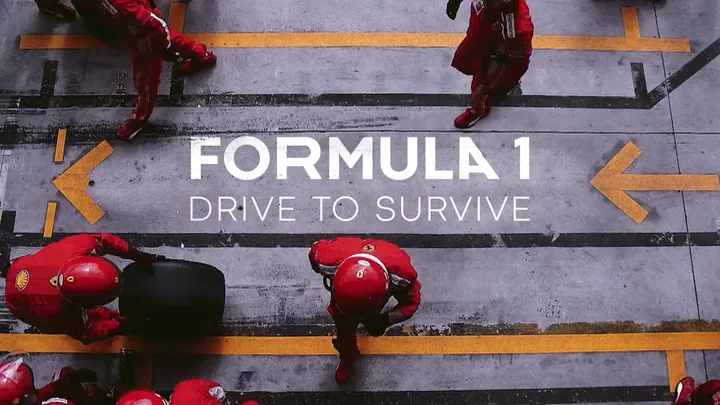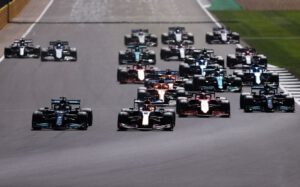Let’s be honest: when Netflix dropped Drive to Survive in 2019, it felt like someone had finally pulled the handbrake on Formula 1’s snobby exclusivity. Suddenly, this high-speed, high-tech motorsport went from “something your rich uncle watches” to “OMG, did you see that Daniel Ricciardo smile?” But not everyone’s thrilled with the series that turned F1 into binge-worthy TV. Some call it a masterpiece; others think it’s Keeping Up with the Constructors.
So, buckle up. Here’s the good, the bad, and the downright dramatic about Netflix’s love letter (or tabloid exposé?) to Formula 1.
The Pros: Netflix’s Winning Formula
F1’s Fan Club Got a Massive Upgrade
Raise your hand if you couldn’t tell a diffuser from a downforce before Drive to Survive. Now, you’re arguing tyre strategies and defending Alex Albon like your life depends on it. The show has singlehandedly lured millions—yes, millions—of new fans, particularly in the U.S., where NASCAR usually reigns supreme. (Take that, ovals!)
Drivers: They’re Just Like Us!
Drive to Survive gave us more than just car stats and pit stops; it gave us personalities. Ricciardo’s grin, Günther Steiner’s rage-fests, and Pierre Gasly’s underdog tears? Iconic. Seeing these drivers outside their cars—laughing, crying, occasionally swearing—turned them into real-life superheroes. Even Kevin Magnussen, who was a bit of a sleeper hit, suddenly had people rooting for him like he was Rocky Balboa.
Rivalries That Make Succession Look Tame
Red Bull vs. Mercedes. Toto vs. Christian. Haas vs…well, money. The series dives into these battles with more spice than a ghost pepper challenge. Watching team principals throw shade at each other is the kind of drama you didn’t know you needed. Forget the track; the real action is in the paddock.
Accessible for the “What’s an Apex?” Crowd
Let’s face it: F1 can be a little intimidating. (Aerodynamics? ERS? DRS? Sounds like a robot convention.) But Netflix stripped it down to what matters: speed, drama, and jaw-dropping crashes. Add some adrenaline-pumping music, sprinkle in a few cliffhangers, and boom—you’ve got yourself a global phenomenon.
The Cons: Where Netflix Hits the Gravel
Soap-Opera-Levels of Drama
Here’s the thing: F1 already has plenty of real-life drama. But Netflix, bless their hearts, cranked it up to 11. Rivalries that were just mild banter on race day become full-blown vendettas on-screen. Even Max Verstappen called it out for being “too fake,” refusing to participate for several seasons. If Max’s brutal honesty doesn’t scare you, nothing will.
Some Stories Get the Pit Lane Treatment
Not every driver or team gets their time to shine. In the early seasons, Ferrari and Mercedes barely showed up, leaving fans wondering, “Where’s Toto’s mic drop moment?” And poor Seb Vettel—one of the most fascinating figures in F1—was treated like an afterthought. If you’re not dramatic enough, Netflix might just leave you in the dust.
New Fans, Unrealistic Expectations
Let’s be real: not every F1 race is a Drive to Survive episode. Sometimes it’s just 78 laps of cars following each other around Monaco while everyone pretends to be excited. But thanks to Netflix, some newbies expect fistfights in the pit lane and crying team principals after every race. Reality? Not so much.
Awkward Moments in the Paddock
Here’s a fun fact: team principals don’t love being portrayed as Bond villains. And drivers? They’re not thrilled about being edited into storylines that make them look petty or clueless. Toto Wolff, the zen master of F1, has hinted at some serious side-eye towards Netflix for stirring the pot a little too much.
So, Is It a Win or a Spin-Out?
Drive to Survive is like the DRS system of Formula 1: it gives the sport a massive boost, but it’s also a bit controversial. It’s brought millions of new fans, turned drivers into stars, and made F1 cool again. But the over-dramatisation and creative editing? Well, let’s just say it’s left purists clinging to their telemetry data in protest.
Still, love it or hate it, Drive to Survive isn’t going anywhere. It’s a turbocharged mix of speed, tears, and office politics that’s changed the game. Just remember: the next time you hear someone say, “Who’s leading the Constructors Championship?”—you might have Netflix to thank for that.
What’s your take? Did Netflix save F1 from obscurity, or is this just reality TV with a gearbox?











More Stories
Is Mercedes Sincere in Regretting Their Actions Towards Max Verstappen—or Just Concerned About Their Image?
Belgian Grand Prix Secures Its Future: Spa-Francorchamps to Stay on the F1 Calendar Until 2031
Jos Verstappen Clears the Air on the Gas Station Story